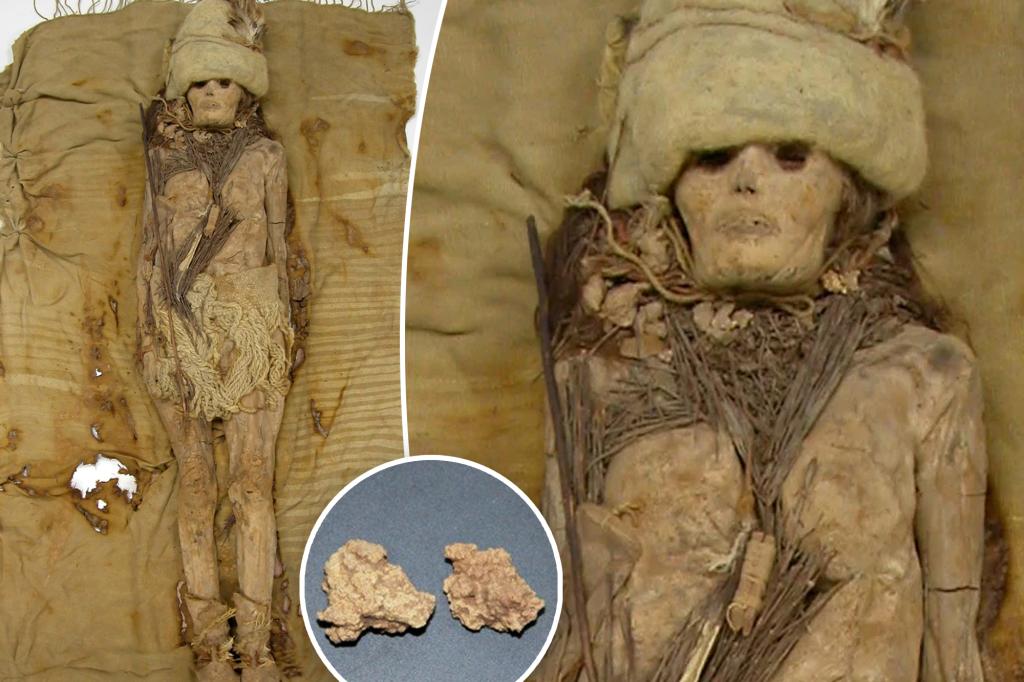In a groundbreaking discovery, scientists have extracted DNA from what is believed to be the world’s oldest cheese, dating back 3,600 years. The cheese, known as kefir cheese, was found smeared around the heads and necks of Bronze Age mummies in a Chinese graveyard in the Tarim Basin. This unique find offers insight into the dietary preferences and cultural practices of the Xiaohe people, who were known to separate different kinds of animal milk into batches of cheese.
The white-colored substance that coated the mummies was initially thought to be a form of cheese two decades ago, but it was only recently confirmed to be kefir cheese. The presence of fungal bacteria consistent with modern-day kefir grains was also discovered, allowing researchers to trace the lineage of the bacteria to both China and Russia. The study of this ancient cheese provides valuable information about how bacteria evolved over the past 3,000 years and sheds light on the interactions between ancient humans and their environment.
The mitochondrial extract taken from the tombs revealed that the cheese contained DNA from both cow and goat milk, indicating that the Xiaohe people had a varied diet. The identification of the current cheese-making Lactobacillus bacteria suggests that this strain may have originated from both China and Russia. This finding challenges previous beliefs that this bacteria was exclusive to Russia’s Caucasus Mountains and highlights the complex interactions and exchanges that have occurred between different cultures over thousands of years.
Studying ancient food items such as cheese provides researchers with a rare opportunity to understand the diet and culture of our ancestors. By examining the microbiome of ancient dairy products, scientists can gain insights into the microbial evolution and milk fermentation techniques used by ancient civilizations. The discovery of kefir cheese in a Chinese graveyard offers a unique glimpse into the culinary practices of the Xiaohe people and provides a valuable piece of evidence for understanding the history of cheese-making.
The research published in the journal Cell sheds new light on the history of kefir cheese and its connection to ancient cultures. By analyzing the DNA extracted from the cheese samples, researchers were able to uncover details about the microbiome, genetic stability, and fermentation techniques used by the Xiaohe people. This study represents a significant step in the field of archaeology and microbiology, as it offers a rare opportunity to explore ancient artifacts and gain a deeper understanding of human history and cultural practices.
Overall, the discovery of the world’s oldest cheese in a Chinese graveyard provides valuable insights into ancient dietary practices and cultural traditions. By studying the DNA extracted from the cheese samples, researchers have uncovered important details about the microbiome, genetic evolution, and fermentation techniques used by the Xiaohe people. This groundbreaking research opens up new possibilities for exploring ancient artifacts and gaining a deeper understanding of human interactions with the environment over thousands of years.


